Christmas cactus vs prickly pear – here's how to tell them apart
Similar flowers, similar shapes - it's no wonder these impressive indoor plants get mistaken for each other
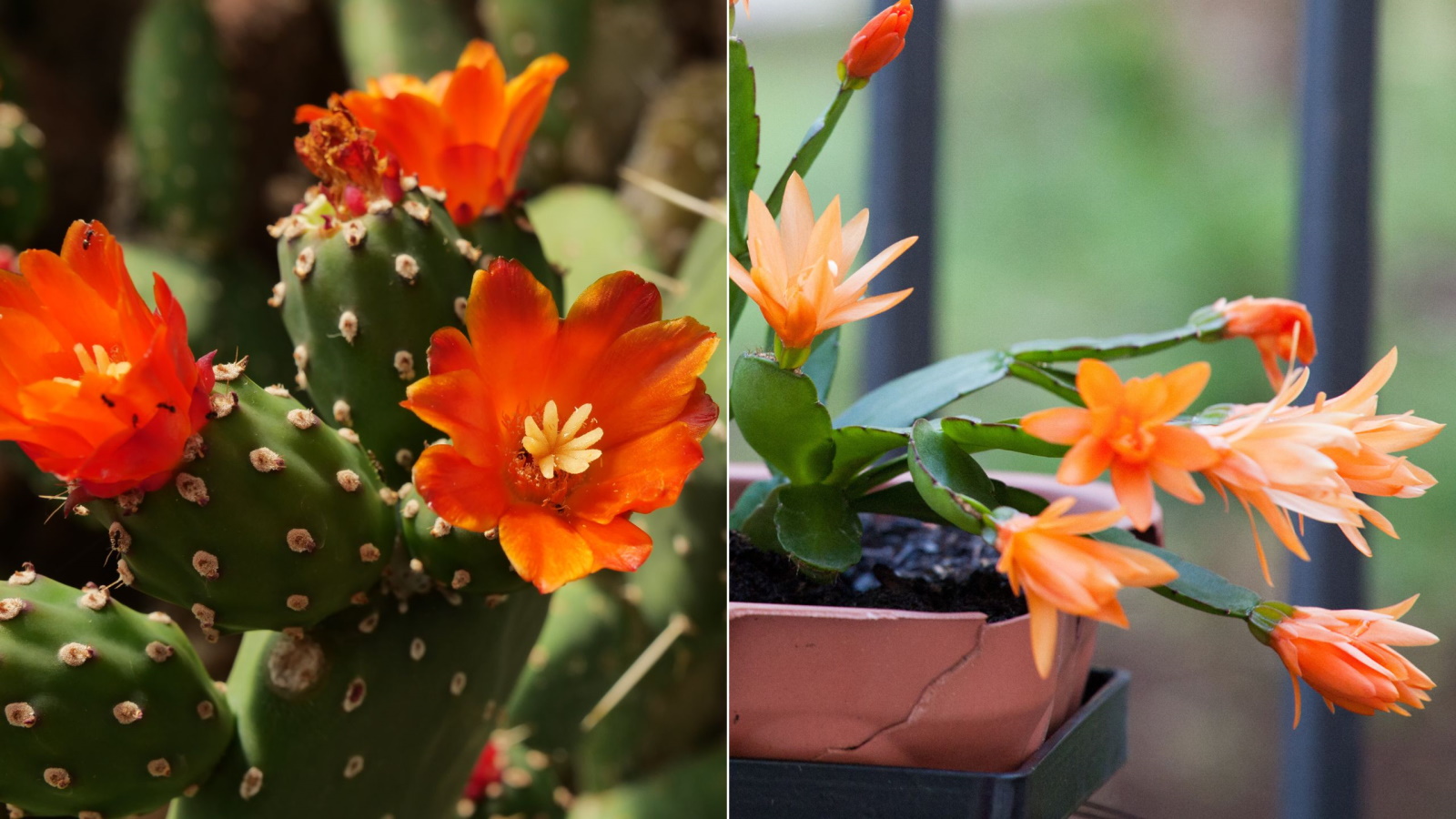

You're scrolling through social media to see a beautiful plant captioned as a prickly pear and suddenly think, 'that looks an awful lot like my Christmas cactus.' Closer inspection of your Christmas cactus and you're left questioning which plant you really have growing in your home.
If you relate to this scenario, don't worry. The best of us have had to debate Christmas cactus vs prickly pear when taking a second look at the new houseplant we've just bought, as these two statement plants have a very similar appearance. Even if you have already taken time to decipher whether you have a Christmas cactus or Thanksgiving cactus, you might still not have spotted your plant is actually a prickly pear. You might have also been fooled if your prickly pear has been getting along fine when receiving Christmas cactus care, as the two's care requirements only differ slightly.
Now is the time to finally know the truth. Here, experts have outlined everything you need to know about Christmas cactus vs prickly pear, so you can spot the difference and provide the right care for the plant you really have.
Christmas cactus vs prickly pear: appearance differences
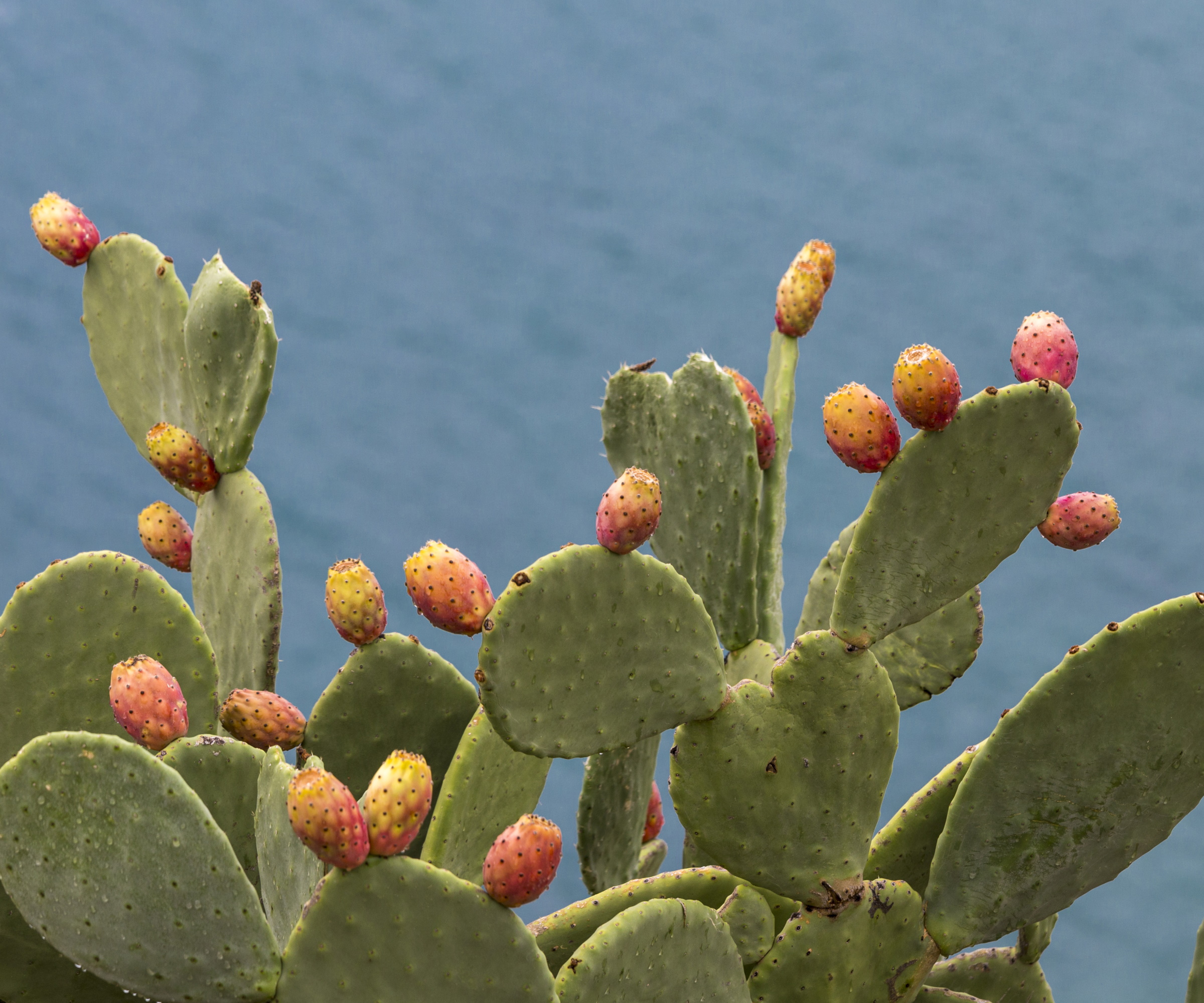
It's understandable why you might have mistaken your prickly pear for a Christmas cactus. Upon first look, they seem the same - both with a succulent-cacti form and orange or pink flowers. However, there are a few key differences you'll spot if you take a closer look.
Firstly, take a look at the leaves of your plant: 'Christmas cacti have ragged, scalloped leaves that grow in segments,' says Lotte Berendsen, a certified botanist from the PlantIn app.
'Prickly pears grow upward with plate-like sections that stack on top of each other. Like many other cacti species, prickly pears have spines. This is something that the Christmas cacti does not have,' she adds.
The plants also belong to different plant groups. Despite its name, a Christmas cactus actually belongs to the succulent family, while prickly pears are from the cactus family. As indicated by its name, prickly pears also produce fruit that is edible. In fact, the whole plant is edible.
The fruit prickly pears produce can easily be mistaken for Christmas cactus flower buds. After all, they are similar colors and shapes. But, you can pay attention to when your plant blooms to spot the difference.
'Christmas cacti thank their name for their blooms. This plant blooms right around Christmas time. The blooms are pink or red and typically grow at the end of the plant’s segments,' explains Lotte.
'Prickly pears, on the other hand, bloom during the summer months (May to July). These impressive, large flowers will only bloom for one day, but with many different flower buds growing on a single plant, the blooming season can last up to two months,' she adds.
If your Christmas cactus isn't blooming, it might be because you haven't given your Christmas cactus a period of darkness - something it needs to trigger flowering. In comparison, prickly pears have shorter-lived blooms, as Lotte notes, and may stop blooming once in their dormant season of fall and winter.
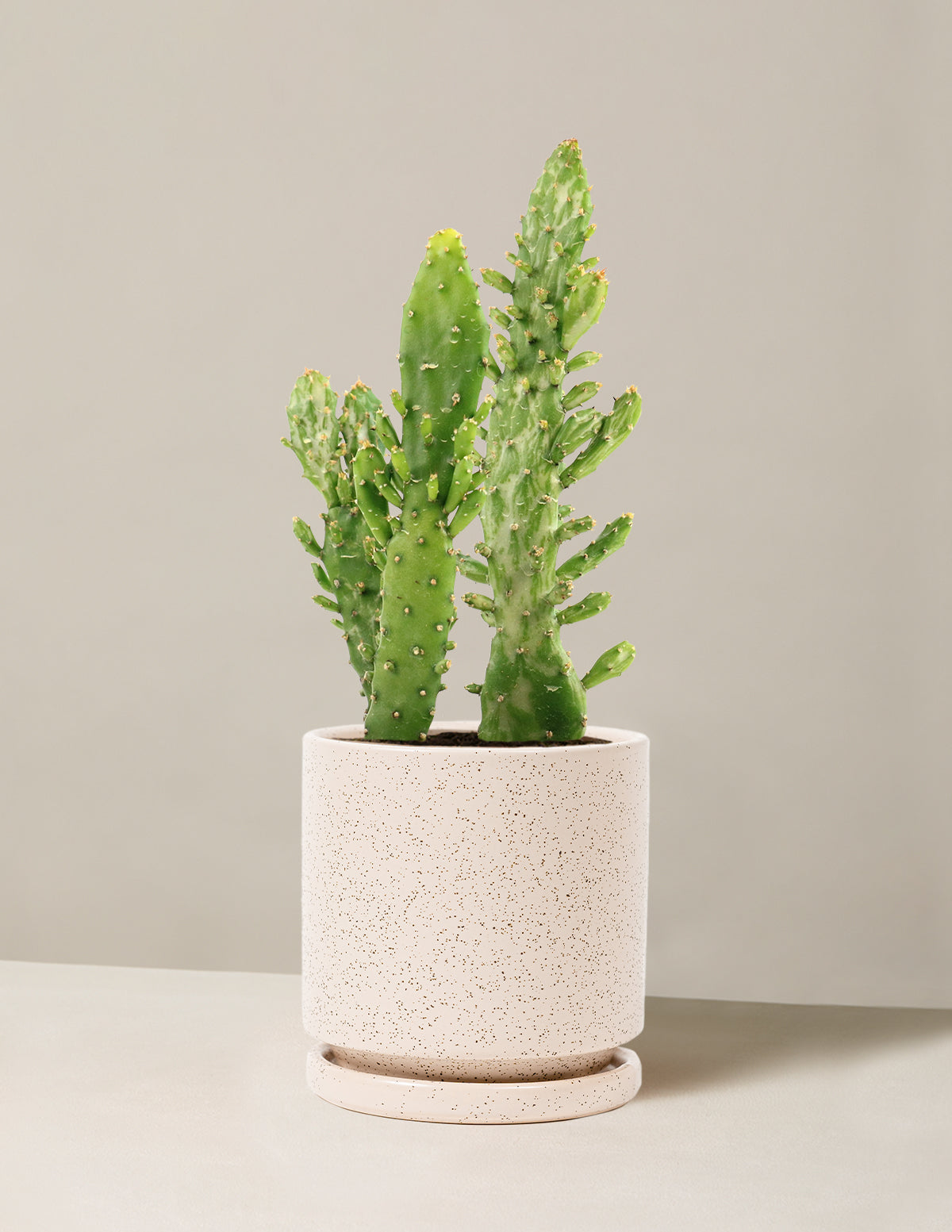
'Joseph's Coat' has flat paddles covered in thick, long spines. It's also has a unique, cream variegation, making it an attractive addition to any houseplant display.

Lotte is a gardening enthusiast, writer, and plant expert at PlantIn, where she provides customers with detailed care and treatment plans
Christmas cactus vs prickly pear: growth habit differences
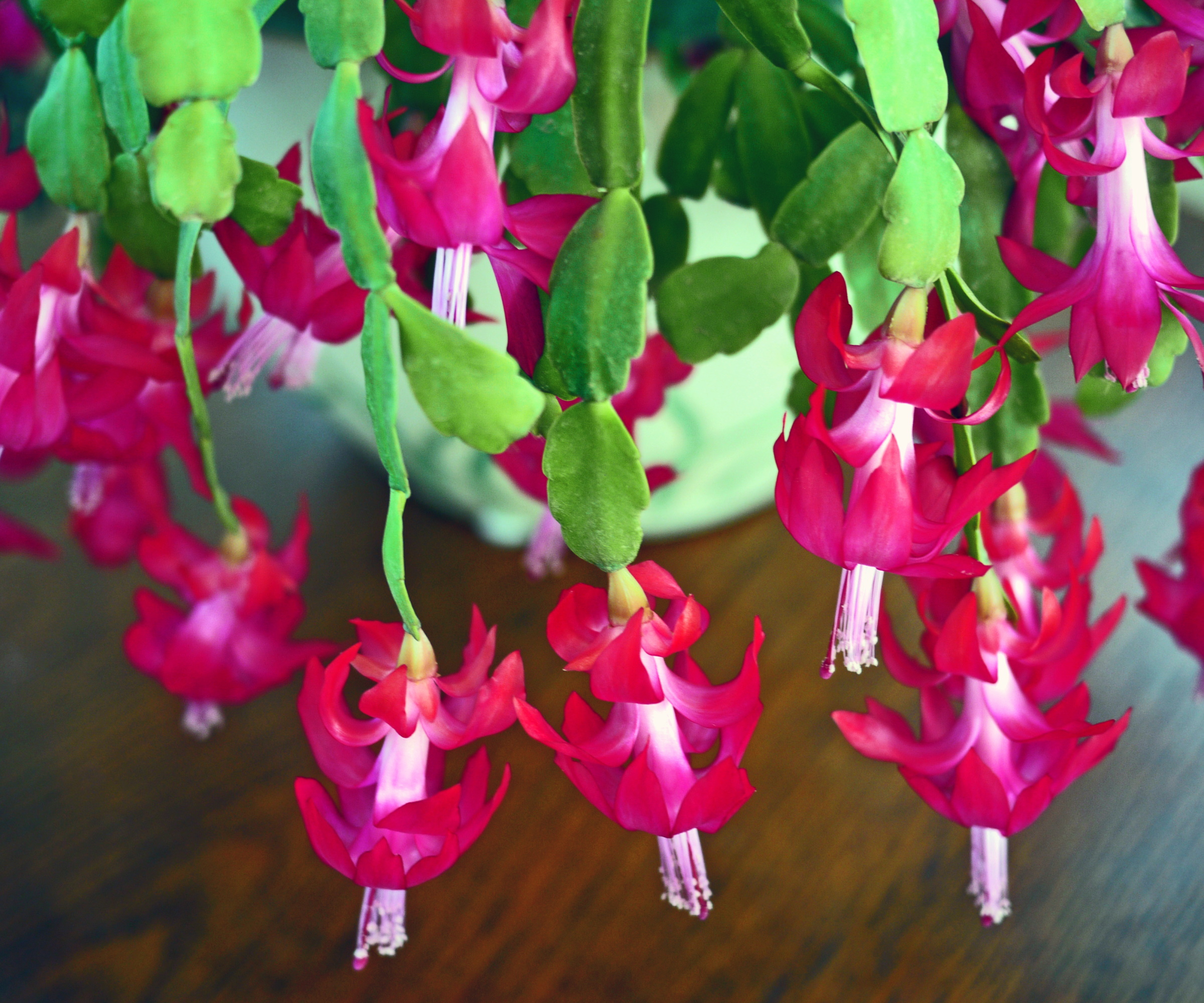
Another obvious difference between a Christmas cactus and prickly pear is their growth habit. This will become more apparent as the plants mature.
'Christmas cacti are epiphytic, which means they naturally do not grow in soil, but climb on surrounding plants and trees instead,' says Lotte.
Christmas cacti are native to the coastal mountains and rainforests of Brazil, where they grow in a similar way to other tropical indoor plants, like orchids and monsteras: 'Epiphytes draw moisture and nutrients through their leaves from the air surrounding them, rather than from the soil,' Lotte adds.
In comparison, prickly pears are native to dry, desert regions of North America and Mexico: 'The prickly pear is a cactus that grows in sandy, poor soils. As this plant grows in arid climates, it does not have any need to absorb moisture from the air, as there is hardly any humidity available,' Lotte explains.
While it's unlikely you'll see a prickly pear form a vining habit, many choose to let their Christmas cactus trail indoor hanging plant. When grown indoors, prickly pears are much more suited to pots on windowsills and coffee tables, making the list of the best small indoor plants.

Christmas cacti are vibrant, low-maintenance houseplants known for its long-lasting blooms. This one comes with a hanging basket, ready for you to display in your home.
Christmas cactus vs prickly pear: care differences
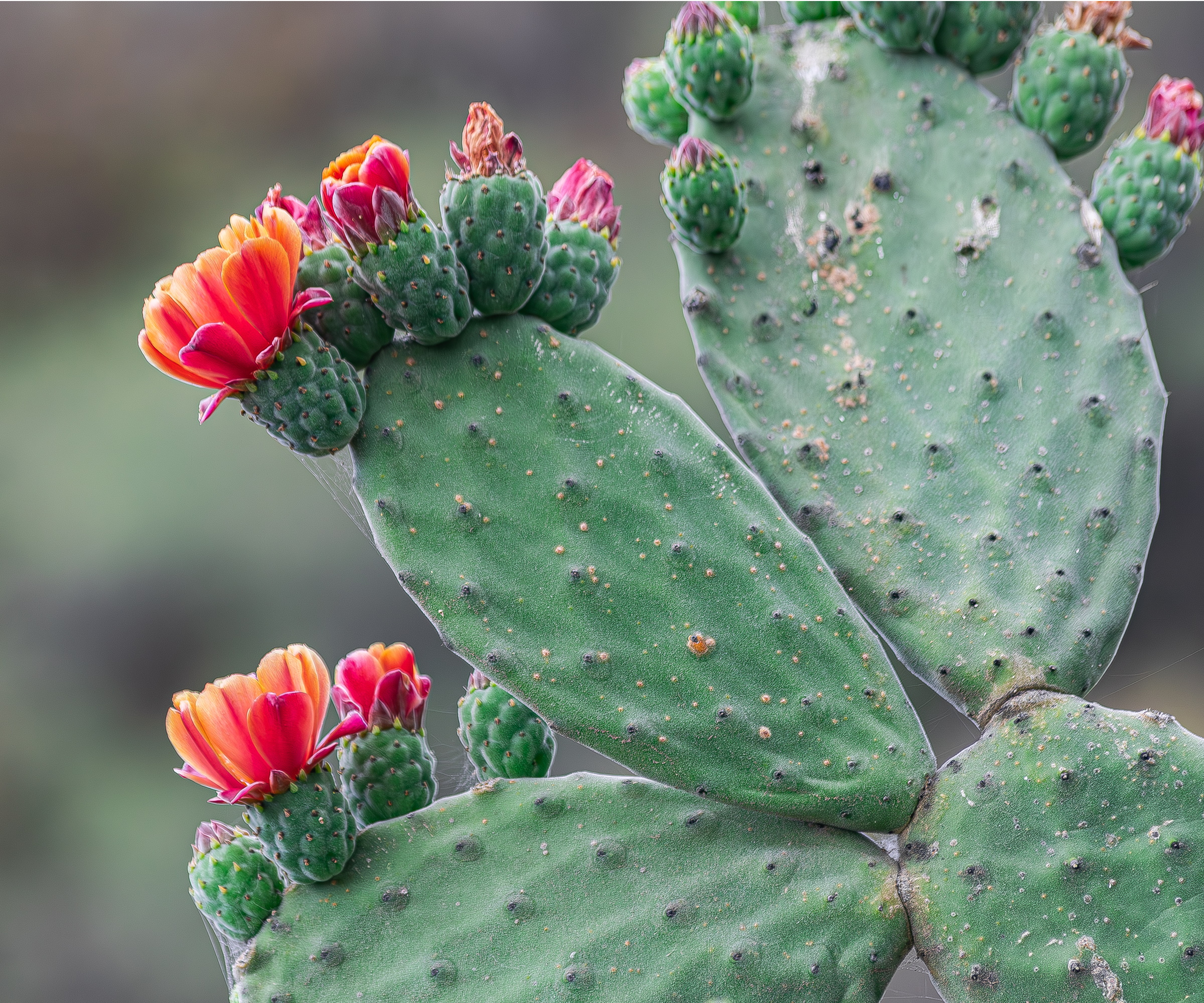
Hopefully it's now easier for you to identify whether you're growing a prickly pear or Christmas cactus. At this point, it's important to understand what each plant needs to thrive in your home.
'Because Christmas cacti are native to the tropical rainforests of Brazil, they grow in moist and humid environments. They are also naturally epiphytic, which means they appreciate high humidity,' Lotte says. 'If you want to ensure your Christmas cactus remains happy, consider adding a humidifier to boost the air moisture,' she suggests.
There are plenty of ways to increase humidity for houseplants. You could get a humidifier (like this one from Walmart), as Lotte suggests, or place more plants around your Christmas cacti, for example.
Make sure to also not water your Christmas cactus too often and avoid Christmas cactus mistakes by only fertilizing your Christmas cactus during its active growth season.
For a prickly pear, the care requirements are slightly different, especially when it comes to watering your houseplant:
'Drought is this plant’s best friend, so make sure you keep the soil dry. I recommend only watering about once a month,' says Lotte. 'Before you water, check the plant’s leaves. If it seems droopy and a little wrinkly, it is time to water. If not, it is better to wait for a little while longer,' she advises.
Another way you can test if it's time to water your houseplants is with this soil moisture meter from Amazon.
Like other cacti houseplants, you also need to ensure your prickly pear gets plenty of sun. 'Place this cactus in a spot with bright, direct sunlight for at least four-six hours a day. Too little light and your cactus won’t go into bloom in the summer months,' warns Lotte.
FAQs
When is prickly pear ready to eat?
Prickly pears are edible plants. While it's true their flowers and stems are also edible, many people choose to only harvest and eat the fruit this plant produces. The fruit will be ready to eat when it is plump, has smooth skin and feels heavy. Unripe prickly pear fruit will not come away from the cactus with ease.
Can Christmas cactus grow outdoors?
Yes, it is possible to grow a Christmas cactus outdoors across US hardiness zone nine to zone 11. However, these plants are not frost-hardy and will need to be overwintered indoors during the colder months. During winter, you can easily care for your Christmas cactus indoors as you would when growing it as a houseplant.
Something else to consider when growing either a Christmas cactus or prickly pear is the best type of pot to use.
'Ideally use a pot that is made of porous material, such as terracotta indoor planters or clay,' Lotte recommends. 'Keep in mind Christmas cacti need slightly more moisture and will need to be watered more frequently in this type of pot,' she adds.
Sign up to the Homes & Gardens newsletter
Design expertise in your inbox – from inspiring decorating ideas and beautiful celebrity homes to practical gardening advice and shopping round-ups.

Tenielle is a Gardens News Writer at Homes & Gardens. She holds a qualification in MA Magazine Journalism and has over six years of journalistic experience. Before coming to Homes & Gardens, Tenielle was in the editorial department at the Royal Horticultural Society and worked on The Garden magazine. As our in-house houseplant expert, Tenielle writes on a range of solutions to houseplant problems, as well as other 'how to' guides, inspiring garden projects, and the latest gardening news. When she isn't writing, Tenielle can be found propagating her ever-growing collection of indoor plants, helping others overcome common houseplant pests and diseases, volunteering at a local gardening club, and attending gardening workshops, like a composting masterclass.
-
 7 underrated kitchen features that are sure to make your life easier, according to interior designers
7 underrated kitchen features that are sure to make your life easier, according to interior designersFrom game-changing storage to functional decor
By Molly Malsom
-
 These 5 plant species will help to attract and nurture an underrated nighttime pollinator that's crucial to every yard
These 5 plant species will help to attract and nurture an underrated nighttime pollinator that's crucial to every yardDiscover the best plants for attracting moths to your yard
By Ciéra Cree